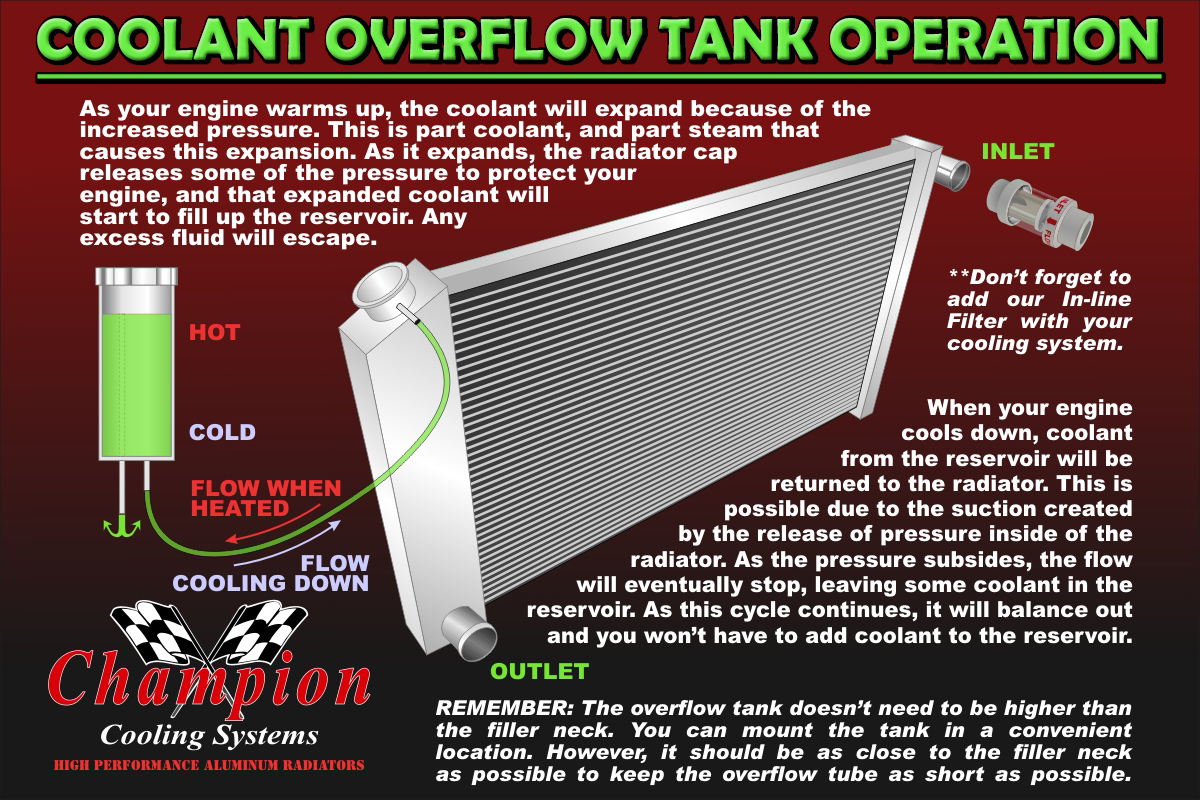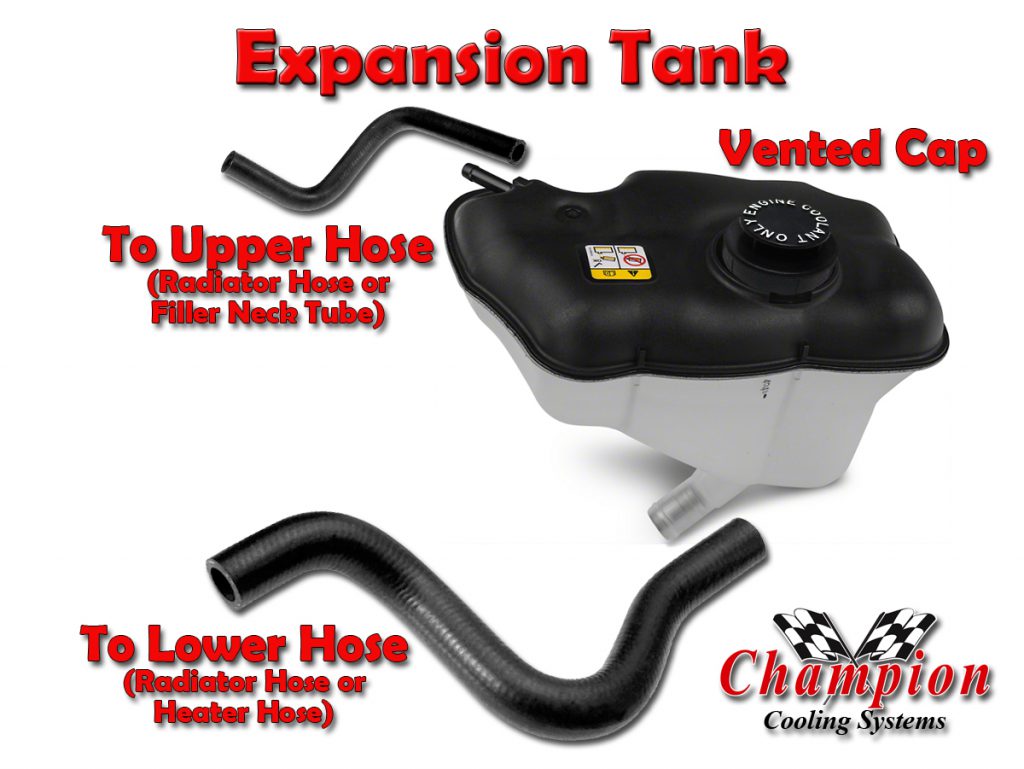We get the question occasionally about expansion tanks and overflow tanks. While the names are fairly self-explanatory, and both perform similar functions, there is a difference between the two. Here, we will explain both tanks and hopefully clear up any confusion about how each is used.
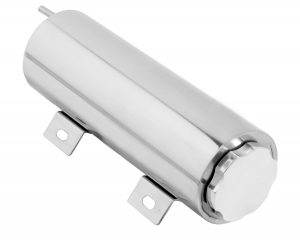 Many vehicles back in the 1960s and earlier had a tube attached to the radiator’s filler neck, and that tube vented to the atmosphere (the ground). When coolant expands from engine temperatures rising, it typically creates steam, and the vented cap allows that steam to vent in order to protect your cooling system. But as the steam expands, so does the pressure, and often times the vented cap also expels coolant.
Many vehicles back in the 1960s and earlier had a tube attached to the radiator’s filler neck, and that tube vented to the atmosphere (the ground). When coolant expands from engine temperatures rising, it typically creates steam, and the vented cap allows that steam to vent in order to protect your cooling system. But as the steam expands, so does the pressure, and often times the vented cap also expels coolant.
This process was good for the radiator, but bad for the environment. Adding a reservoir to that vent tube allowed the steam to be expelled, but also allowed for the coolant that came with it to be captured instead of being discarded to the ground. Capturing that expelled coolant meant that it could then be recovered and reintroduced back into the radiator.
Overflow Tank – Also: Reservoir or Recovery Tank
Overflow tanks were added to cooling systems to catch the overflow and store it, instead of leaving it on the ground. This was good for radiators, and much better for our environment. Different manufacturers called them different things: overflow – to catch the overflow from the radiator; reservoir – to store the captured coolant; or recovery tank – to recover coolant that was expelled when the pressure increased.
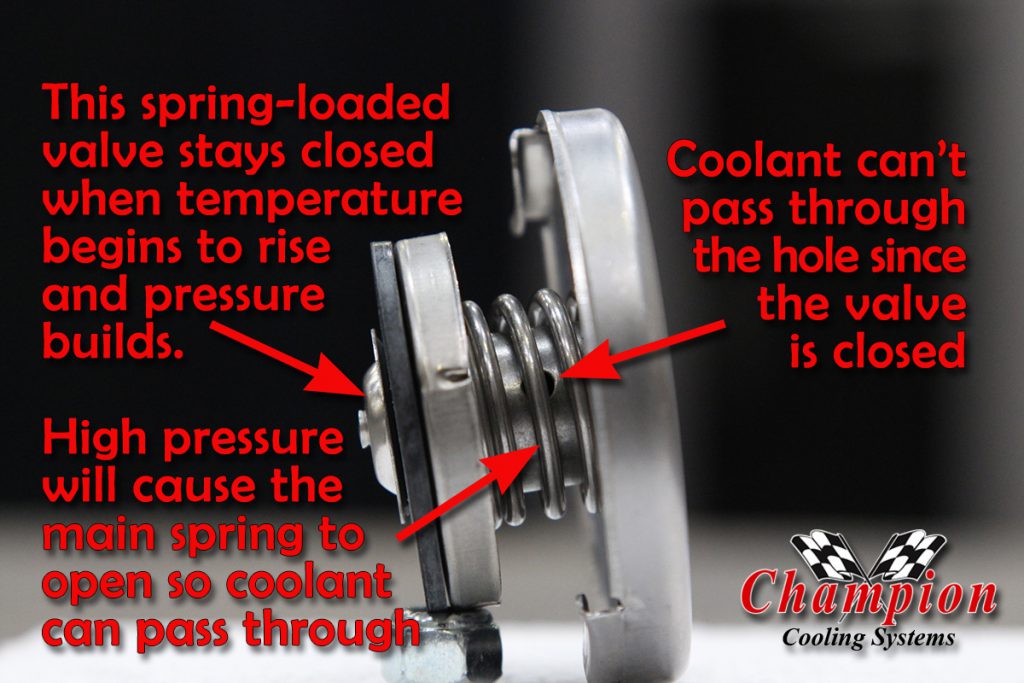
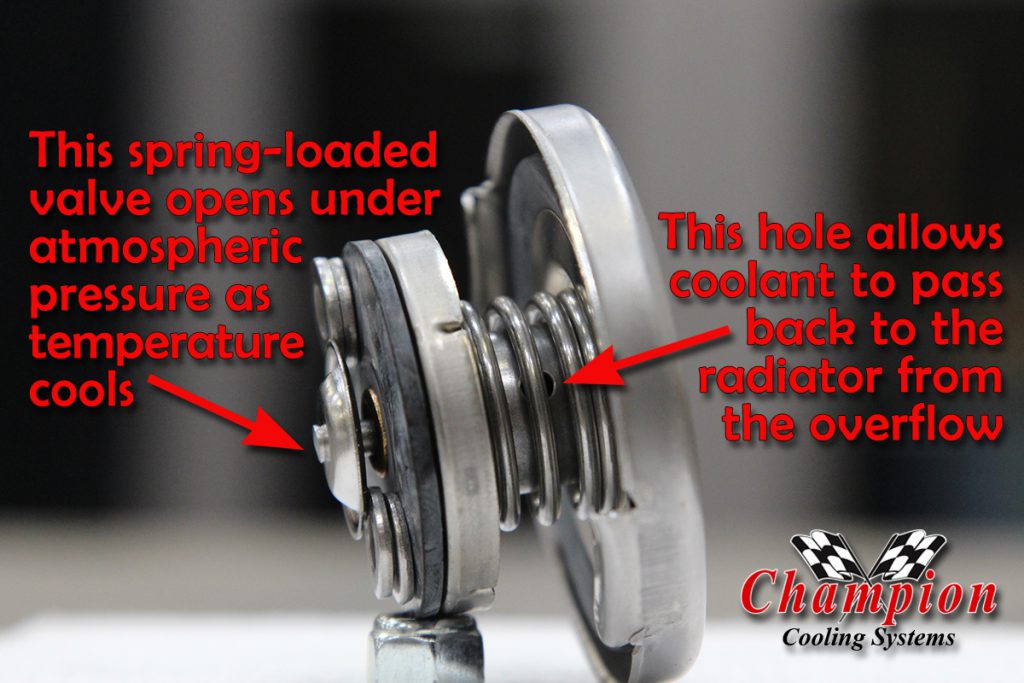
The heavy spring on the radiator cap that can be seen is compressed when pressures reach roughly .9 bar (13 psi). The smaller spring that can’t be seen is how coolant is returned – through the center of the cap.
The process of returning coolant back to the radiator is possible because the combination of the reduced steam pressure allows the atmospheric pressure to push coolant from the tank back into the radiator through the vented radiator cap. This, in turn, adds more coolant to your system and helps to keep the engine a little cooler.
Many plastic tanks have a ‘cold’ and ‘hot’ mark; those marks indicate where the coolant should be in the tank during cold cycles (non-running) and hot cycles (engine running). It’s really just a guide, however, filling the reservoir during cold cycles just means that you will likely end up with coolant on the ground. For this reason, overflow tanks/reservoirs,recovery tanks have their own vent. Expelled coolant will enter the tank from the bottom, and when the level rises it will expel through the vent tube.

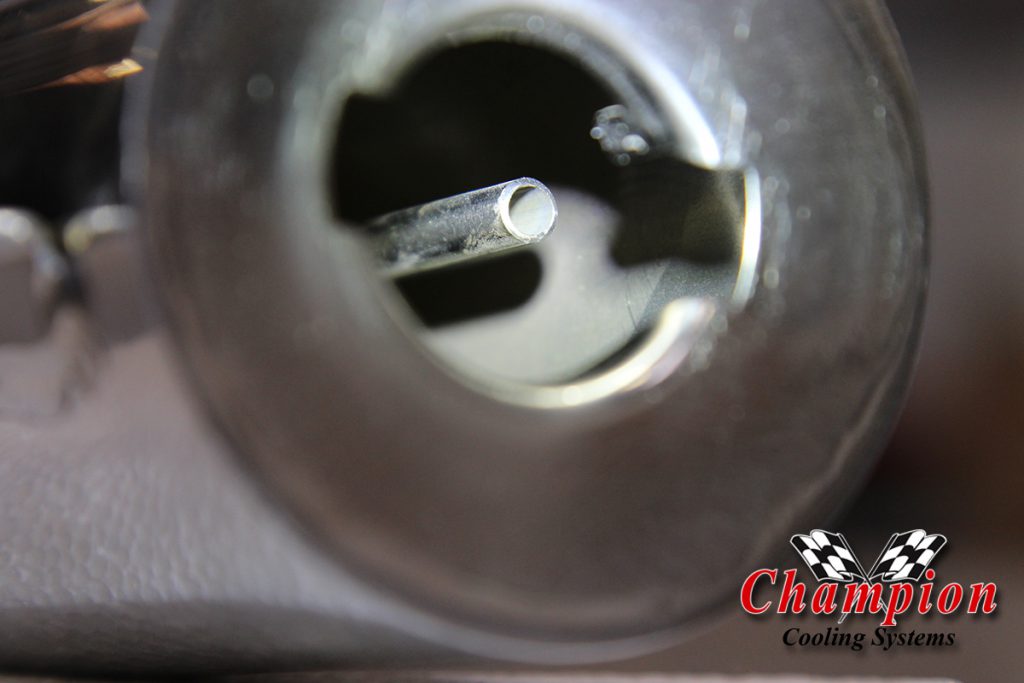
From the bottom of an overflow like ours, you’ll find two tubes. The longest one on the outside is also the longest one on the inside. It allows the expelled coolant to fill the reservoir to a certain point before it’s expelled to the atmosphere (ground).
These tanks can be cylindrical, with both hoses attached at the bottom, like ours, or the factory style will enter at the bottom and the vent will be at the top. With our overflow tank, the two tubes are different lengths, with the vent being much longer, allowing the level to increase before it vents off excess coolant.
A system with an overflow will have a vented radiator cap, and usually a sealed reservoir cap. The reservoir is never under steam pressure, which allows the coolant to return via atmospheric pressure.
Expansion Tank
Some manufacturers and websites will confuse the overflow reservoir for the expansion tank, but the two perform very different functions. Expansion tanks work in much the same manner as the overflow tank, but server a very different purpose. Expansion tanks are just that: tanks that provide expansion of your cooling system, giving you up to a half gallon more coolant. You’ve seen these on some classic cars, like the Galaxie, or even the old Shelby Cobras.
But where an expansion tank really differs is that it is typically a sealed system, not affected by atmospheric pressure. As temperatures and pressures increase, the expansion tank allows the cooling system to expand without bleeding any off to the atmosphere. With this type of system, if the radiator has a cap it will be a non-vented cap; the expansion tank will have the vented cap in case the pressure exceeds the expansion tank’s capacity. In this case, a catch can or overflow can be used with the expansion tank to recapture expelled coolant. Once the system balances out, you should not have to add additional coolant.
The expansion tank also has a connection to the cooling system through a by-pass or a heater hose. Therefore, instead of only containing expanded coolant, the expansion tank is actually a part of the complete cooling system and coolant circulates through the tank as it does through the radiator. It’s typically the highest point in the cooling system.

